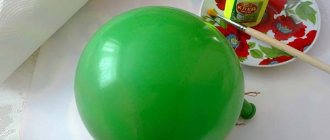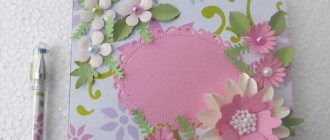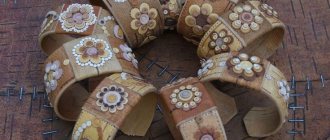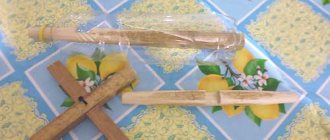Waterproof balloon pad
This method is best suited for smartphones with a diagonal of no more than 5 inches. The cover is very inexpensive, not very attractive and covers the camera, but it has good water resistance and can protect the case joints from moisture. To make it you only need a balloon:
- Inflate the balloon, but do not tie it. Hold the neck with your fingers.
- Place the back of the phone on the ball and press down.
- Slowly release the air from the balloon while continuing to press the phone.
It is most convenient to do this on a smooth surface.
- When the air comes out of the ball completely, the phone will be covered with a waterproof case.
Video: ball overlay
Made from silicone, foamiran or plastic tubes
Three quick and inexpensive options for making cases. 1. In the first case, starch is mixed with silicone and a dye of the required color. The homogeneous mass is rolled out into a layer of the desired size. The protective case is formed directly on the phone wrapped in cling film and left until completely dry (within two hours). The required holes are cut. Decor – lace, rhinestones. 2. The next method uses foamiran cut to the shape of a telephone. The parts are connected with hot glue. Decoration - figurines of contrasting colors made of the same material. 3. The author suggests experimenting and making an unusual accessory from multi-colored plastic tubes melted with an iron.
Bright felt case
To create this cover, you don’t need any special sewing skills—it’s enough to know how to thread a needle and make simple external seams. You will need:
- felt for the base (your phone should fit twice on the cut);
- felt for applique (optional);
- thread and needle;
- scissors;
- glue (optional, for applique).
Let's get started:
- Place your phone on a piece of felt and trace it. Make rounded corners on the bottom and straight corners on top.
- Make allowances of 1 cm on each side except the top.
- Cut out two of these pieces.
- Sew them together with stitches over the edge. If desired, you can use a sewing machine.
- If you decide to make an applique, cut out its elements from felt and glue it to the product.
For example, here the craftswoman decided to depict a house with balls
Video: DIY felt case
How to make a phone cover
In order to make a plug, you must be guided by a special diagram of the device. No skills or experience needed. You will need the following parts:
- generator for checking voltage;
- antenna with amplifier;
- exact assembly diagram.
After arranging and fastening all elements, a mandatory check is required. If the equipment does not work, it is recommended to perform adjustments and adjustments.
Based on reviews from experienced craftsmen and beginners, it is clear that making a case for a mobile phone with your own hands is not difficult. Various techniques and styles can be applied. The material can be any product that is safe for health: leather; silicone; textile; polyethylene; scotch. The result is an interesting and unique thing.
Sparkling beaded overlay
For lovers of everything shiny, a beaded overlay is perfect. It is not difficult to do, although it is painstaking. You will need:
- beads of the same size (cases made of beads with a metallic or hologram look especially impressive);
- glue gun;
- baking paper;
- scotch;
- toothpick or needle.
Be patient, turn on your favorite music and get started:
- Wrap the phone in parchment. The seam must be on the screen. Secure it with tape to prevent fidgeting.
- Make the base for the case using a glue gun. To do this, apply an even layer of glue on the back and side surfaces. Do not apply glue to places that should be open: camera, buttons, connectors.
- The hard part begins. Take a bead with a toothpick and attach it to the glue pad. Until it is dry, you don't have to add glue to the beads. As soon as the base dries, each bead will have to be dipped in glue.
- Cover the entire product in this manner, placing the beads tightly. It is most convenient to place the beads in rows, like bricks.
You can also glue an old unnecessary case with beads without wasting glue on the base.
How to make a phone case with your own hands from different materials
A phone case can be made from a wide variety of available materials. Here are ideas for smartphone cases with different levels of complexity. You need to choose the size according to your mobile phone. This can be done using an ordinary ruler or tape measure.
Made from silicone
You will need:
- colored or transparent silicone (sheet);
- ruler or tape measure;
- glue;
- cutter;
- decorative elements.
How to make a silicone case:
- Using a ruler, measure the dimensions of the phone, and then use a cutter to cut off the excess parts. You should carefully and carefully trim the silicone, as uneven edges may remain.
- Next, lean the phone against the cut out halves and make holes for the speakers and camera.
- Using transparent waterproof glue, adhere both halves.
- On the surface of the silicone case you can place any additional decorations - rhinestones, beads, seed beads.
Master class on making a silicone bumper at home:
Leather
You will need:
- sheets of leather (you can use a high-quality substitute such as eco-leather);
- cutter;
- impregnation;
- special device as a press;
- plastic or metal ornament;
- waterproof glue.
Step-by-step instructions for making a leather phone case:
- Measure the size you need for your phone on a piece of leather.
- Cut 1 part, and then the second with a margin on the fold. Try it on the gadget.
- Glue the product on the sides and place it in a special device for the glue to harden and press.
- Take any ornament and press it firmly onto the front of the case.
- Using a cutter, align the sides of the product.
- Place a piece of wood or something hard inside to maintain its shape during procedures.
- To acquire a beautiful skin tone, it is recommended to use impregnation (1 part turpentine, 1 part sesame or linseed oil, 2 parts wax).
- Allow the product to dry for 3-4 hours.
The main stages are shown in the photo:
The video shows how to make a leather case for an iPhone:
From fabric
To sew a fabric cover, it is recommended to use only thick and dense material. You will also need a cutter, ruler, waterproof glue or thread with a needle. After measuring, you need to cut out 2 halves, 1 of which will be slightly larger than the other. They can be glued together or sewn with decorative seams. You can use various decorative elements: buttons; rhinestones; stripes; beads.
From paper
How to make a paper case with your own hands:
- It is recommended to use very thick and thick paper (like for watercolors).
- Measure the dimensions of the phone and cut one part exactly to size, the second with a margin for the edges.
- Take a piece of wood or a metal block to glue the product.
- The edges of the future case can be leveled, and the entire surface can be painted in one or more colors and covered with acrylic varnish.
- Allow the varnish to dry for 1-2 hours. The accessory is ready.
From threads
Using ordinary threads, you can make a beautiful and fashionable phone case with your own hands. You can also add lurex or silk thread, mohair or wool. Here you can use your imagination and bring interesting ideas to life. Using threads, you can tie braids according to size. Place on the base and fasten them at your own discretion (on paper or fabric). The base can be removed or left in the future.
From jeans
A very popular type of creativity is patchwork - patchwork. Using old unwanted jeans or scraps from jeans, you can make an interesting thing. Various colors of material of different sizes will come in handy. It is recommended to use the base for gluing or stitching parts of the product (this way the shape will not be lost). At the end of the work, you can decorate the accessory with satin ribbons, artificial flowers, and woven borders.
Master class on how to make cool cases from jeans, tape and even a bottle:
From cardboard
Thick cardboard makes very good phone cases. It is recommended to carefully measure and cut the parts. They can be attached using waterproof glue. It is possible to paint at your discretion, and also be sure to cover it with acrylic varnish. On the inside you need to glue a small elastic band into which the gadget will be inserted.
Made of wood
It is recommended to use a cardboard base and pieces of plywood in natural colors. The wooden case is made in marquetry style. In accordance with the simple picture, you should cut out the details of a flower, animal or landscape. Glue the elements onto the base and iron them. It is recommended to seal the result with transparent acrylic varnish. After drying, you can lightly sand the surface to add shine.
Made from plasticine
After measuring the size of the future case, you should take plain or colored plasticine that hardens in air. You can use cardboard parts as a base. After hardening, the shape is slightly uneven. It can be corrected using available tools. You can fasten the 2 parts using a wide elastic band so that you can insert the gadget inside.
Modifying an old overlay with glitter
If you have an old and unnecessary cover, you can decorate it with glitter. For this you will need:
- actual glitter. It is best to use glitter of different colors and sizes - it’s more interesting;
- Polish for hair;
- old pad.
Put on a surgical mask and open the window - you will have to breathe a lot of varnish. Spray the case generously with hairspray and quickly sprinkle glitter on it. Repeat the procedure until the entire case sparkles.
Do not skimp on varnish so that glitter does not fall off the finished product.
Fabric cover
Knitting and weaving fabric covers with your own hands is also common, so you can make such a product literally before your eyes. To do this, you need thick fabric, threads, a needle, acrylic paints, colored paper, scissors, glue and a stencil.
First, you need to cut two identical blanks from fabric according to the size of the phone with free edges. On one side you can draw a design that will appear on the back cover of the phone. You can use cardboard to make an elastic frame from the back of the phone.
In this article, we looked at several master classes on do-it-yourself smartphone cases. You can always add to them or come up with your own version based on the instructions provided.
A case can be made from literally anything that is at hand, you just need to use your imagination. Moreover, such cases can be presented as a gift, which is always needed. We wish you creative success.
Gyaru pad
Gyaru is a Japanese subculture of fashionista girls. They abundantly decorate their smartphones with keychains, glitter and voluminous stickers. If you like richly decorated covers, then let's try to make our own.
Gyaru love a bunch of different accessories on the smartphone case
You will need:
- old cover;
- small accessories (no larger than the size of the case). You can use broken hair ornaments, Swarovski crystals, polymer clay figures, miniature soft toys, bows - whatever comes to your mind and is at hand. Just don’t forget that all this must be combined with each other;
- pieces of openwork fabric or tulle;
- glitter;
- Polish for hair;
- fine-grained sandpaper (a foot file is quite suitable);
- glue;
- alcohol;
- round nose pliers.
Let's get started:
- Gently rub the back surface of the old case with sandpaper. We need it to go from smooth-glossy to rough.
- Wipe the surface of the case with alcohol to remove all excess grease - this will help the decorations stick more securely.
- Now we begin to apply decorations. Usually, the cover is first decorated with fabric to create a background. Apply a little glue to the cover and glue the pieces of fabric as you like. Don't be afraid to go outside the case. The edges can be trimmed with openwork ribbon.
- Think about how you want to arrange the accessories on the case. Before gluing, try just laying them down and see how they fit together.
- Having decided on the location of the accessories, glue them to the fabric. It is better to hold the smallest ones not with your fingers, but with round nose pliers, so as not to accidentally smear the glue.
- If you want, you can add a little glitter. Spray hairspray onto the case and apply fine glitter.
Homemade book case
One of the most stylish and convenient accessories for a smartphone is a book case. You can also make it yourself. The work will only take a few hours.
One of the most stylish and convenient accessories for a smartphone is a book case.
Progress:
- Circle the cover around the perimeter, add another centimeter and a half and draw an additional line.
- After this, cut out the base of the future cover.
- On the wrong side of the suede, draw a pair of center lines, the distance between which should be exactly a centimeter.
- Trace the pattern of the largest of the parts on one side and the other from the axial ones.
- Cut the pattern by one centimeter and circle the resulting blank under the frame.
- Trace both axial sides and the inner part.
- Cut out the resulting frame, making allowances along the inner cut, turn it to the wrong side and immediately sew short sections.
- Sew the finished frame on top.
- Sew together the internal and external parts of the product, while matching the external cuts.
- Now fold the parts inward with the wrong side and sew, aligning the central parts.
- Place a relief seam along the contours of the smaller part.
- Now cut out a pocket and a belt, two and a half centimeters wide.
- Sew a strap and attach buttons to it, sew on the front and middle of the case.
Art print
If you don't like to draw, you can always find ready-made beautiful prints from artists. The Internet is full of beautiful and free drawings that can easily be scaled to fit your phone. The design for the phone case will only need to be printed and cut out.
Note!
How to make a paper lantern with your own hands step by step: an easy master class with photos and descriptions (new designs)
Do-it-yourself topiary step by step: instructions, photos, assembly diagram, master class for beginners
How to make a florarium with your own hands - step-by-step instructions with a full description of all stages (120 photos)
As with fabric, paper can be glued over the case and varnished or glued to the inside of a transparent case.
Pattern template
We are making a pattern for a phone case.
Photo: eSovetnik.ru It is necessary to make a pattern for a phone case. Take some thick cardboard and trace around your phone with a pencil.
Then you need to make an increase on the seams. This is an important point, if the increase is too large, the phone in the case will lie very loosely. If the increase is too small, the phone will not fit into the case you sewed. It will be very disappointing.
If you do not have enough experience in sewing, and your phone has rounded corners, you can build a pattern with right corners. The rounded edges of the product require some sewing skills.
Seam allowances should be made along the side seams and along the bottom edge of the cover. Increase for the top cut of the cover: 1.5 cm for hemming the fabric.
A phone bag can be sewn with internal or external seams. Therefore, the seam allowance is calculated differently.
Seam allowance formula for a cover with an internal seam
Measure the thickness of your phone with a regular ruler.
We measure the thickness of the phone. Photo: eSovetnik.ru
Calculate the increase in seams using the formula: 1/2 the thickness of the phone + 0.3 + 0.2.
- 0.3 – increase in seam width.
- 0.2 – increase in the thickness of the internal seam.
Seam allowance formula for a cover with an outer seam
For a cover with an external seam, there is no need to increase the thickness of the internal seam. Calculation formula: 1/2 the thickness of the phone + 0.3. That is, we only increase the width of the seam.
After all the calculations have been made and seam allowances have been made, your pattern for the cover is ready! Feel free to cut it out of cardboard and transfer it to fabric.
Just a paper phone
Flat phone
One of the simplest and fastest options is a flat phone. To do this, we perform the following sequence of actions:
- Let's take a sheet of cardboard.
- Cut out a rectangle 15x8 cm.
- If desired, paint it in the chosen color.
- From the remaining cardboard we cut out two rectangles 6x7 cm.
- On the first one, using a pen, pencil, felt-tip pens and our own imagination, we depict application icons, just like on the screen of a real phone.
- On the second we depict the keyboard.
- Glue both small rectangles onto the large one so that the “screen” is on top and the “keyboard” is on the bottom.
- We finish drawing the buttons, speaker, camera and logo.
It couldn't be simpler!
Volumetric smartphone
A little more complicated than the previous version.
- We take cardboard. For greater volume, it is better to take a corrugated one.
- We cut out three rectangles measuring 13.8x7.5 cm.
- We round the corners of the rectangles or leave them sharp, depending on personal preference.
- We cut out two similar rectangles from thick glossy paper, or colored paper.
- We glue the cardboard rectangles together in a stack, obtaining a blank for the body of the device.
- We glue paper rectangles on both sides of the workpiece.
- Cover the ends with paper or tape.
- Draw a screen on the front side of the case or print it on a separate sheet of paper, cut it out and stick it on.
- Draw the necessary buttons under the screen depending on which phone was chosen as a sample. For example, an iPhone has one round button.
- For greater durability, the front part of the case should be sealed with transparent tape.
The smartphone is ready!
Openwork phone case: manufacturing instructions
The glue gun is the main tool for this craft. However, we will not limit ourselves to this tool alone. We arm ourselves with the following materials:
- nail polish
- scotch
- parchment
DIY openwork case
How to make a phone case?
Stage 1:
- We wrap a sheet of parchment around the smartphone, placing the sheet on top of each other at the joints of the panels.
- Cover the screen with parchment, securing it with tape.
Stage 2:
- Draw an outline for the holes where the camera, sockets and buttons are located on the gadget.
- Cover the edges of the side panels of the gadget with hot glue.
- Apply glue along the contours for the camera and buttons.
- We apply the ornament to the back wall of the gadget. The side of the gadget smoothly merges with the elements of the ornament. We wait until the drawing is completely dry.
Stage 3:
- Apply a thin layer of nail polish to the surface of the adhesive ornament, which can be replaced with acrylic paint. We wait until the paint dries.
- We put the original covering with an ornament on the gadget.
You can watch the process of making a case using hot glue in the video below.











